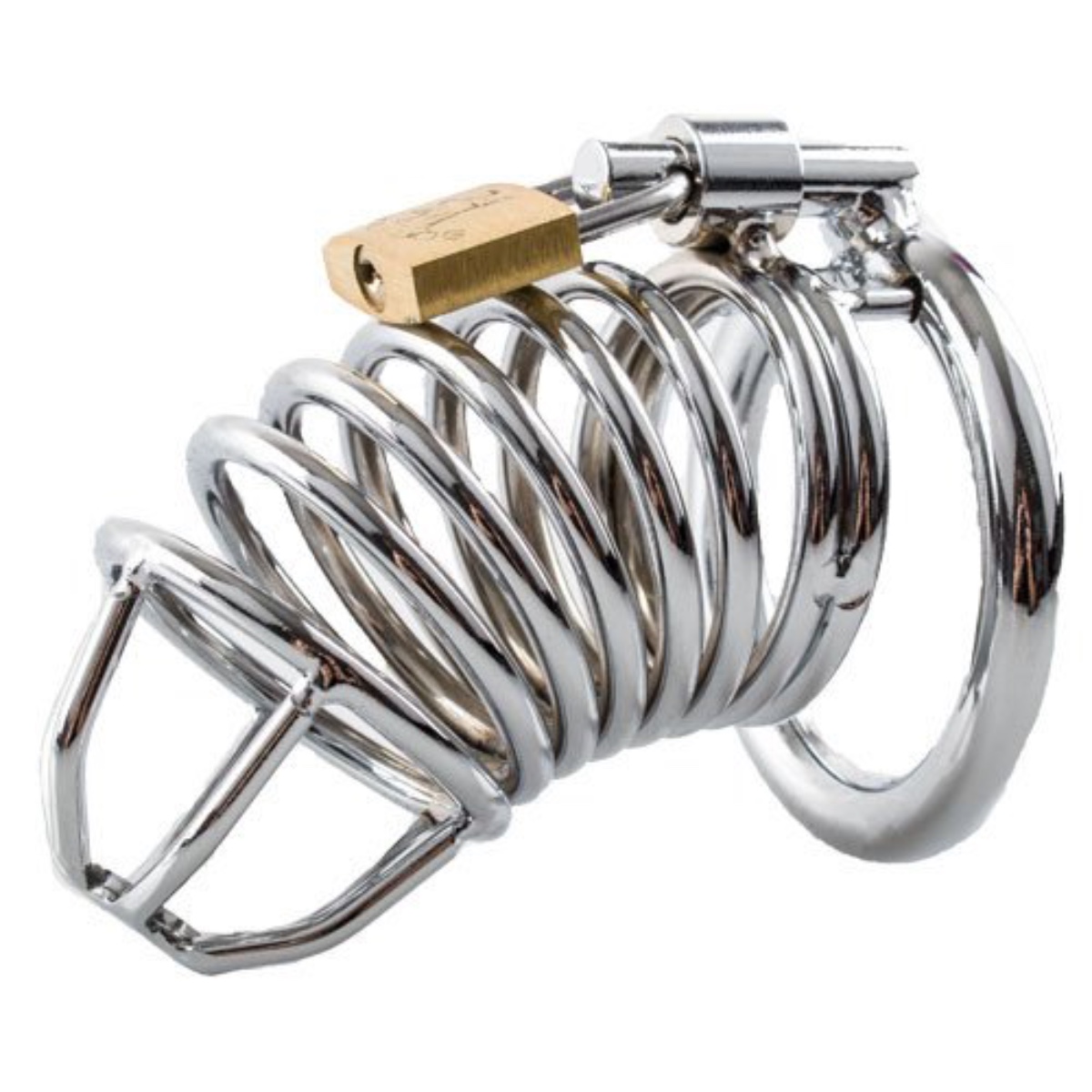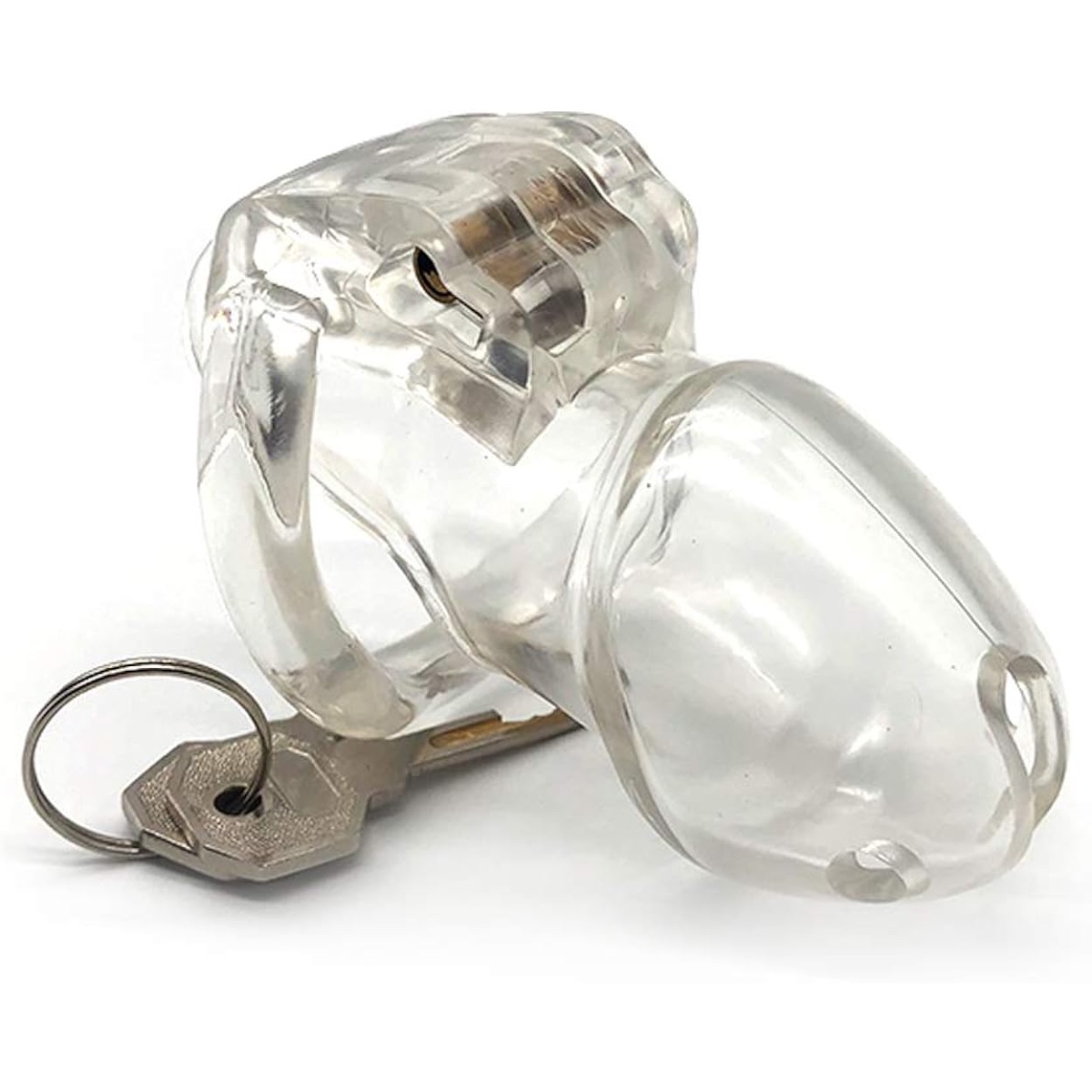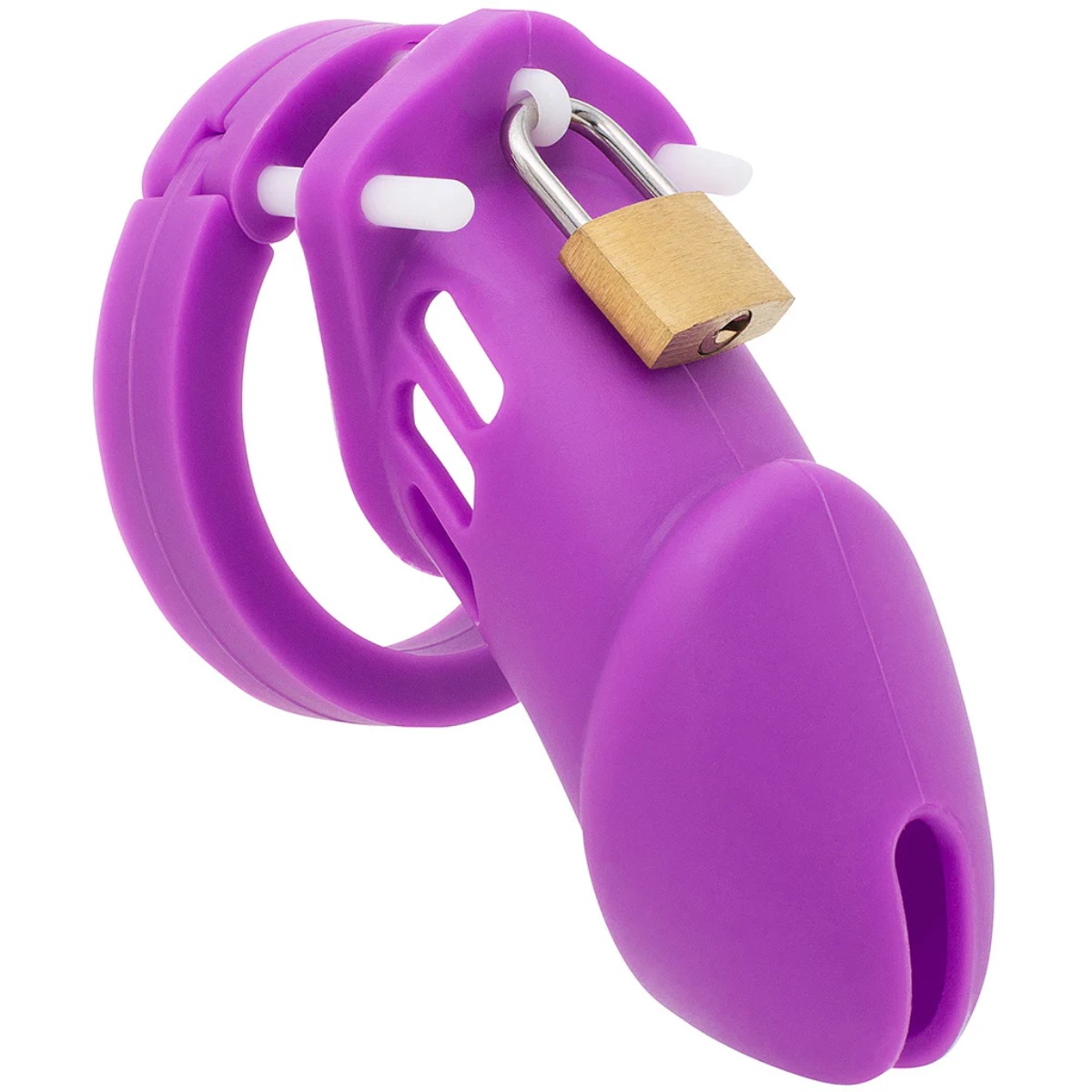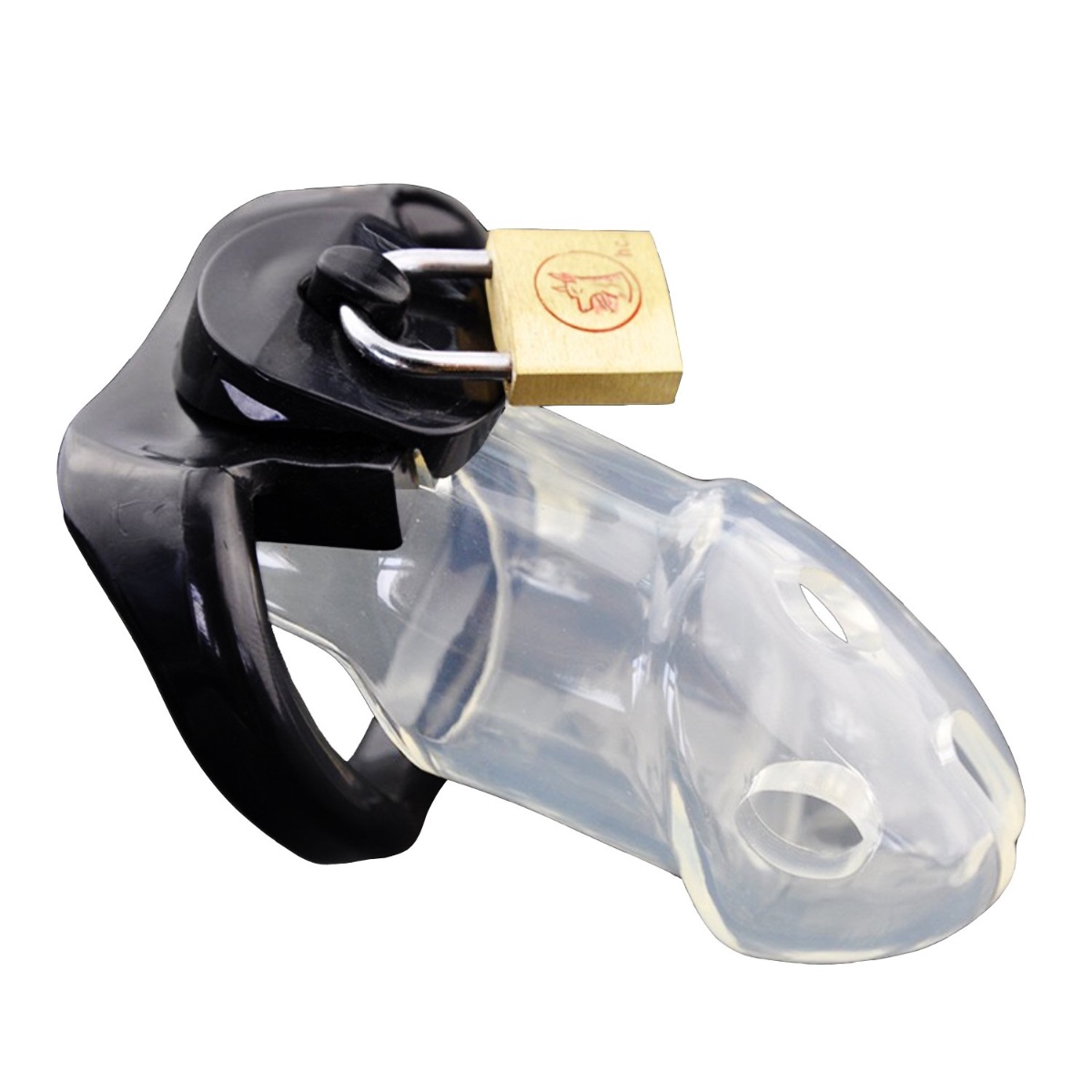The use of chastity cages has seen a significant rise in popularity, with many individuals exploring them for various personal and relational reasons. Selecting the right material for a chastity cage is crucial for both comfort and safety. This article aims to provide a comprehensive comparison of different materials used in chastity cages, helping you make an informed decision. We will delve into the characteristics of common materials, examining their benefits and drawbacks, and offering tips on maintenance.
Take a look at this awesome range of male chastity cages at the best possible prices by clicking here.
Comparing Materials: Which Chastity Cage is Best?

Overview of Common Chastity Cage Materials
Chastity cages are crafted from a variety of materials, each offering distinct features. The most commonly used materials include metal, plastic, silicone, and resin. Here is a brief overview of each:
- Metal: Known for its strength and durability, metal chastity cages are often made from stainless steel, titanium, or aluminum. They provide a sense of security but can be heavier and cooler to the touch.
- Plastic: Lightweight and often less expensive, plastic cages are easy to mold into various shapes and sizes. However, they might not offer the same level of durability as metal.
- Silicone: Flexible and soft, silicone cages are comfortable for prolonged wear. They are also easy to clean but may not provide the same level of security as harder materials.
- Resin: Offering a balance between plastic and silicone, resin cages are durable and can be crafted into intricate designs. They may, however, be less flexible than silicone.
Each material comes with its own set of advantages and disadvantages, which we will explore in detail.
Check out the best price for chastity cages and cock cages by clicking here.
Metal Chastity Cages

Metal chastity cages are favored for their robustness and the sense of security they provide. The most common metals used in these cages are stainless steel, titanium, and aluminum.
Types of Metals Used
- Stainless Steel: Highly durable and resistant to corrosion, stainless steel is a popular choice. It is also hypoallergenic, making it suitable for those with sensitive skin.
- Titanium: Known for its lightweight yet strong properties, titanium offers excellent durability without the heft of stainless steel. It is also hypoallergenic.
- Aluminum: Lightweight and often more affordable, aluminum is less durable than stainless steel and titanium but still provides a strong cage option.
Benefits
Metal chastity cages offer several benefits:
- Durability: Metals like stainless steel and titanium are known for their long-lasting nature.
- Security: The strength of metal provides a high level of security, which is often desired in a chastity device.
- Ease of Cleaning: Metal cages can be easily sanitized, reducing the risk of infections.
- Hypoallergenic Properties: Metals like stainless steel and titanium are less likely to cause allergic reactions.
Drawbacks
Despite their many advantages, metal cages also have some drawbacks:
- Weight: Metal cages can be heavier, which might be uncomfortable for some users.
- Potential for Coldness: Metal can feel cold against the skin, which might be uncomfortable initially.
- Cost: High-quality metal cages, especially those made from titanium, can be expensive.
Best Practices for Care and Maintenance
To ensure the longevity and safety of your metal chastity cage, consider the following care tips:
- Regular Cleaning: Clean the cage thoroughly with mild soap and water. For a deeper clean, you can boil stainless steel cages or use specialized metal cleaners.
- Inspect Regularly: Regularly check for any signs of wear or damage, especially if the cage has intricate parts.
- Avoid Abrasives: When cleaning, avoid abrasive materials that can scratch the surface of the metal.
Check out the best price for chastity cages and cock cages by clicking here.
Plastic Chastity Cages

Plastic chastity cages offer a lightweight and affordable option for those exploring chastity devices. They are made from various types of plastics, each with its own characteristics.
Types of Plastics Used
- Polycarbonate: This type of plastic is known for its high impact resistance and clarity. It is commonly used in safety equipment and can withstand significant stress without breaking.
- ABS Plastic: Acrylonitrile Butadiene Styrene (ABS) is another durable plastic, often used in household items and toys. It is known for its toughness and ease of molding into different shapes.
Benefits
Plastic chastity cages come with several advantages:
- Lightweight: The light nature of plastic makes these cages comfortable for prolonged wear, causing less strain on the body.
- Affordability: Generally, plastic cages are more budget-friendly compared to metal options, making them accessible to a wider audience.
- Ease of Customization: Plastics can be easily molded and colored, allowing for a variety of designs and sizes to fit individual preferences.
Drawbacks
Despite their benefits, plastic cages have some downsides:
- Potential for Breakage: While durable, plastics can break under extreme stress, potentially leading to accidents or discomfort.
- Less Security: Plastic does not offer the same level of security as metal, which may be a concern for those seeking a more restrictive device.
- Allergic Reactions: Some individuals may experience allergic reactions to certain plastics, leading to skin irritation.
Best Practices for Care and Maintenance
To maintain your plastic chastity cage, follow these guidelines:
- Regular Cleaning: Clean the cage with mild soap and water regularly. Avoid using harsh chemicals that can degrade the plastic.
- Check for Cracks: Inspect the cage frequently for any signs of stress or cracks, especially around the locking mechanism.
- Avoid High Temperatures: Keep the cage away from high heat sources to prevent warping or melting.
Check out the best price for chastity cages and cock cages by clicking here.
Silicone Chastity Cages

Silicone chastity cages are known for their flexibility and comfort, making them a popular choice for many users.
Benefits
Silicone cages offer numerous advantages:
- Flexibility: Silicone is highly flexible, allowing the cage to move with the body and providing a comfortable fit.
- Comfort: The soft texture of silicone makes it gentle against the skin, reducing the risk of irritation during extended wear.
- Hypoallergenic Properties: Silicone is generally hypoallergenic, making it suitable for those with sensitive skin or allergies.
Drawbacks
There are also some disadvantages to consider:
- Potential for Stretching: Over time, silicone can stretch, which might reduce the effectiveness of the cage’s security.
- Less Security: Silicone’s softness means it can be easier to remove or tamper with, compared to harder materials.
- Challenging to Clean: Silicone can be more difficult to clean thoroughly, as it may absorb odors and require special cleaning agents.
Best Practices for Care and Maintenance
Proper care of a silicone chastity cage includes:
- Thorough Cleaning: Clean the cage regularly with warm water and mild soap. For deeper cleaning, you can boil the silicone cage periodically.
- Inspect for Damage: Check for any signs of wear or stretching and replace the cage if it becomes too loose.
- Store Properly: When not in use, store the silicone cage in a cool, dry place away from direct sunlight to prevent degradation.
Check out the best price for chastity cages and cock cages by clicking here.
Resin Chastity Cages

Resin chastity cages are a notable option for those seeking a balance between strength and customizability. Here’s a closer look at their characteristics.
Benefits
Resin cages come with several notable advantages:
- Lightweight: Resin is much lighter compared to metal, making it comfortable for extended use.
- Customizable Designs: The flexibility in shaping resin allows for a variety of intricate designs, catering to aesthetic and functional preferences.
- Durability: Despite being lightweight, resin is strong and can withstand considerable wear and tear.
Drawbacks
However, there are some downsides to resin cages:
- Higher Cost: Resin cages can be more expensive than plastic, which might be a consideration for budget-conscious buyers.
- Allergic Reactions: Some individuals may experience allergic reactions to resin, leading to skin irritation or discomfort.
Best Practices for Care and Maintenance
To keep your resin chastity cage in optimal condition, consider these tips:
- Regular Cleaning: Clean the cage with mild soap and water to maintain hygiene. Avoid using harsh chemicals that could damage the resin.
- Inspect for Damage: Regularly check for any cracks or signs of wear, and replace the cage if it becomes compromised.
- Proper Storage: Store the resin cage in a cool, dry place to prevent any degradation from environmental factors.
Comparing the Materials
When deciding on the best material for a chastity cage, it’s crucial to compare the different options based on various factors. Here’s a side-by-side look at metal, plastic, silicone, and resin:
Comfort
- Metal: Can be heavy and cold, potentially uncomfortable for some.
- Plastic: Lightweight, generally comfortable for prolonged wear.
- Silicone: Highly flexible and soft, offering superior comfort.
- Resin: Lightweight and durable, providing a balance of comfort and strength.
Security
- Metal: Offers the highest level of security due to its strength.
- Plastic: Less secure, can be more easily broken.
- Silicone: Lower security due to flexibility and potential for stretching.
- Resin: Strong and durable, offering good security while being less rigid than metal.
Hygiene
- Metal: Easy to clean and sterilize.
- Plastic: Easy to clean but may need regular inspections for cracks.
- Silicone: Can be challenging to clean thoroughly, may absorb odors.
- Resin: Easy to clean but should be inspected regularly for wear.
Cost
- Metal: Generally the most expensive.
- Plastic: Most affordable option.
- Silicone: Moderately priced.
- Resin: Can be more expensive than plastic but offers a good balance of cost and features.
Personal Preference
- Beginners: Plastic or silicone might be best due to comfort and affordability.
- Experienced Users: Metal or resin might be preferred for their durability and security.
- Short-Term Wear: Silicone or plastic for flexibility and comfort.
- Long-Term Wear: Metal or resin for durability and hygiene.
Conclusion
Choosing the right material for a chastity cage is a personal decision that depends on various factors such as comfort, security, hygiene, and cost. This article has explored the different materials available, highlighting their pros and cons. It’s essential to consider your own needs and preferences when making a choice. We hope this guide helps you make an informed decision. Feel free to share your experiences or ask further questions to continue the discussion.
Check out the best price for chastity cages and cock cages by clicking here.

